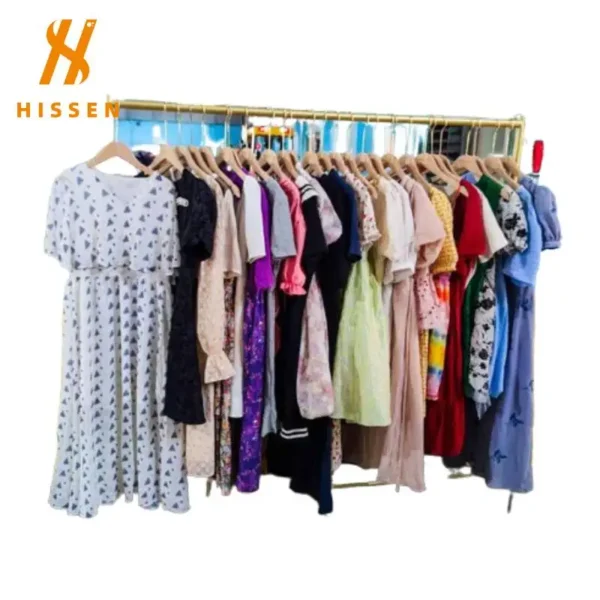I. Introduction: The Rise of Used Designer Shoes in Bulk Trade
The global resale market has transformed into one of the fastest-growing sectors in fashion, and used designer shoes are at the center of this shift. Luxury footwear retains value far better than fast fashion alternatives, making it attractive for wholesalers, B2B buyers, and professional resellers. Bulk inventory purchasing allows businesses to secure high-demand styles at lower costs, yet the advantages come with equally significant challenges.
Unlike direct-to-consumer sellers, companies operating in bulk face complexities in warehouse organization, logistics, and maintaining consistent quality. For a buyer handling thousands of pairs, success does not depend solely on acquiring stock; it depends on managing and moving that inventory strategically.
II. Building Trustworthy Supplier Relationships
Every bulk purchase begins with sourcing. Without reliable suppliers, even the best inventory systems will fail. Suppliers of used designer shoes should always prioritize relationships rather than transactions. Accurate graders, authenticators, and those who can supply in the volumes needed should be trusted.
Check how the supplier inspects its goods, what its market reputation is, and whether it will be able to support operations as they scale. Be sure to talk as regularly about the stock as you do about the price because misunderstandings on stock carry much weight in ensuring that stock supports your business objectives.
Authenticity is only part of the challenge for wholesalers. The real game in bulk trade is not a petty issue of identification but categorization — how to sort, grade, and channel the stock they have acquired into the right outlets. Near-new-condition shoes might be directed toward premium outlets while mid-grade products can move on online marketplaces. The clearer grading systems are made available, the faster every process becomes, dispute levels go down, and returns get maximized.
III. Smarter Warehousing Strategies

Bulk inventory requires more than extra storage space—it needs organization that supports growth. A warehouse dealing with used designer shoes should not be designed like a standard fashion stockroom. Instead, it should prioritize efficiency, product protection, and traceability.
Rotation Policies: Businesses should adopt FIFO (First In, First Out) systems to ensure that older stock sells before newer arrivals. This prevents slow-moving items from losing value in storage.
Segmentation by Condition: Shoes should be grouped based on grade, brand, or season. Clear labeling and digital tracking help staff locate and dispatch products quickly.
Repair and Cleaning Zones: Not every pair arrives in perfect condition. By allocating space for minor repairs or cleaning, companies can upgrade products before resale, increasing their value.
Cycle counting—smaller, more frequent inventory checks—helps keep stock records accurate, avoiding surprises during audits. For bulk operations, preventing shrinkage and misplacement directly impacts profitability.
Technology as a Growth Tool
Managing thousands of pairs of used designer shoes without digital support is nearly impossible. Spreadsheets and manual systems may work for small-scale sellers, but B2B operations require real-time tracking and automated updates.
Inventory management software enables businesses to monitor stock movement across multiple sites, synchronize sales platforms with warehouse availability, and forecast demand more accurately. With digital solutions, wholesalers reduce human error, avoid overstocking, and maintain transparency across the supply chain.
For growing businesses, technology also supports scalability. As more warehouses and sales channels come into play, centralized digital systems ensure seamless control over expanding operations.
IV. Supply Chain and Distribution Optimization
Inventory Synchronization: Distribution systems should be integrated with warehouse data so that real-time inventory levels match sales platforms, reducing overselling or delays.
Streamlining Logistics Operations
In B2B resale, speed and efficiency define market competitiveness. Handling second hand designer shoes in bulk requires logistics systems that minimize delays while keeping costs manageable. Centralized shipping hubs, transparent documentation, and predictable transportation schedules form the backbone of efficient distribution.
Businesses should work closely with freight partners who understand resale logistics, especially for international shipments. Timely delivery ensures that inventory moves quickly through the supply chain, avoiding warehouse congestion and unnecessary holding expenses.
Diversifying Distribution Networks
Relying on a single distribution channel can limit growth. To scale effectively, wholesalers and resellers should diversify sales strategies, reaching multiple regional markets and digital platforms simultaneously. This approach not only reduces dependency risks but also maximizes exposure for bulk lots of used designer shoes.
Partnerships with regional distributors, online resale platforms, and B2B marketplaces expand market reach. Diversification enhances resilience, especially in industries where consumer demand can shift rapidly across geographies and platforms.
V. Long-Term Profitability Through Strategy

Managing used designer shoes in bulk goes beyond operational efficiency. It is about creating a scalable model that can generate high profits with minimal waste.
Data-Driven Procurement: When it is known which brands, sizes, and categories move on the fastest, then stock is purchased more accurately. Thus, there is an avoidance of dead stock buildup and an increase in the sell-through rate.
Regional Warehousing: In this process, delivery time to customers within targeted markets is minimized due to reduced shipping time inside the country.
Performance Monitoring: Turnover rate, channel profitability, and warehouse efficiency are the metrics that will point out where businesses need to optimize further. Every single step in bulk management-sourcing, storing, logistics, and selling-has something to do with margins. In return for your efforts in refining these areas, you get not only a short-term profit but also long-term sustainability.
Scaling for the Future
The market for used designer shoes will keep expanding as buyers adopt pre-owned luxury both for sustainabilities as well as affordability. Companies who want to succeed need to be ready for scalability making sure that their systems can take on further expansion in the future without falling apart because of inefficiencies.
Operations at scale mean putting money into tech tools, widening the net of supplier sources and making standard steps that back global trade. Teaching groups how to handle bigger work and fixing up the setup before jams happen keeps firms in the lead.
VI. Conclusion
Designer shoes remain some of the most profitable niches in the resale industry. However, managing them in bulk necessitates more than just storage and shipping; from sourcing authentic stock to warehouse design, technology implementation to supply chain streamlining—every stage plays a part in long-term success.
Firms that undertake strategic bulk management will not only mitigate risks but also unfasten new growth opportunities. With adequate planning, B2B buyers, wholesalers, and resellers can turn bulk inventory management from just a logistical challenge into a formidable competitive edge.



